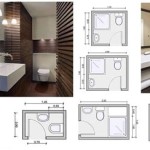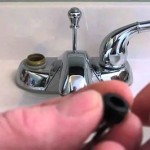Plain White Bathroom Sinks: A Comprehensive Guide
The plain white bathroom sink is a ubiquitous fixture in residential and commercial spaces. This seemingly simple element of bathroom design offers a compelling combination of functionality, affordability, and versatility, making it a perennial favorite for homeowners, contractors, and interior designers alike. This article will delve into the various aspects of plain white bathroom sinks, exploring their advantages, types, material considerations, installation nuances, and maintenance requirements.
The enduring popularity of plain white bathroom sinks stems from their inherent neutrality. White, as a color, is widely accepted as clean, bright, and unobtrusive. It complements virtually any bathroom decor, from modern minimalist designs to more traditional and ornate styles. This adaptability allows for easy integration into existing color schemes and simplifies the process of redecorating or updating a bathroom without requiring a complete overhaul. Furthermore, the uniformity of a white sink facilitates easy matching with other bathroom fixtures, such as toilets, bathtubs, and countertops, creating a cohesive and harmonious aesthetic.
Advantages of Choosing a Plain White Bathroom Sink
Several key advantages contribute to the continued demand for plain white bathroom sinks. These benefits encompass both practical and aesthetic considerations, making them a logical choice for a wide range of bathroom projects.
Cost-Effectiveness: Plain white bathroom sinks are generally more affordable than sinks made from colored materials or unique designs. The manufacturing process for mass-produced white sinks is often simpler and more efficient, resulting in lower production costs that are passed on to the consumer. This affordability makes them an attractive option for budget-conscious homeowners and large-scale construction projects.
Versatility: As mentioned previously, the neutral color of a white sink allows it to blend seamlessly with diverse bathroom styles and color palettes. Whether a bathroom features bold, vibrant colors or a more subdued, monochromatic scheme, a plain white sink will rarely clash or detract from the overall aesthetic. This versatility makes it a safe and reliable choice for any bathroom renovation or new construction project.
Easy Availability: Plain white bathroom sinks are readily available at most home improvement stores, plumbing supply retailers, and online retailers. The widespread availability ensures that replacements and repairs can be easily addressed without significant delays or difficulty in sourcing the necessary components. This accessibility is a significant advantage for both homeowners and contractors faced with tight deadlines or unexpected bathroom repairs.
Hygienic Appearance: The color white is often associated with cleanliness and hygiene. While a white sink is no more hygienic than a sink of any other color if properly cleaned, its appearance makes it easier to spot dirt, grime, and soap scum. This visual cue can encourage more frequent and thorough cleaning, ultimately contributing to a more sanitary bathroom environment.
Resale Value: Bathrooms and kitchens are key areas that potential homebuyers scrutinize. A clean, well-maintained bathroom with a neutral aesthetic, including a plain white sink, can contribute positively to the perceived value of a home. While a unique or trendy sink may appeal to some buyers, a plain white sink is unlikely to be a deterrent and may even be seen as a positive feature due to its timeless appeal and ease of integration with various design preferences.
Types of Plain White Bathroom Sinks
While the color remains consistent, plain white bathroom sinks are available in a variety of styles and mounting configurations to suit different bathroom layouts and design preferences. Understanding the different types of sinks available is crucial for selecting the appropriate option for a specific bathroom project.
Pedestal Sinks: Pedestal sinks consist of a basin mounted on a freestanding pedestal. They are a popular choice for smaller bathrooms or powder rooms where space is limited. Pedestal sinks offer a classic and elegant look, but they typically lack storage space beneath the basin.
Vessel Sinks: Vessel sinks, also known as above-counter sinks, sit on top of the countertop rather than being recessed into it. They come in a wide range of shapes and sizes and can add a touch of modern flair to a bathroom. Vessel sinks require a taller faucet to accommodate the raised basin.
Undermount Sinks: Undermount sinks are installed beneath the countertop, creating a seamless transition between the sink and the countertop surface. This type of sink is easy to clean as there is no lip or rim to collect dirt and debris. Undermount sinks typically require a solid surface countertop material, such as granite or quartz.
Drop-in Sinks: Drop-in sinks, also known as self-rimming sinks, are installed from above the countertop. They have a visible rim that rests on the countertop surface. Drop-in sinks are relatively easy to install and can be used with a variety of countertop materials.
Wall-Mounted Sinks: Wall-mounted sinks are attached directly to the wall, leaving the space beneath the sink open. They are a good option for small bathrooms or for creating a more minimalist look. Wall-mounted sinks require adequate wall support to ensure stability.
Console Sinks: Console sinks combine the functionality of a pedestal sink with the added storage of a vanity. They typically have legs or a visible frame that supports the basin and may include a small shelf or cabinet for storing toiletries. Console sinks offer a balance between aesthetics and practicality.
Material Considerations for Plain White Bathroom Sinks
The material used to construct a plain white bathroom sink significantly impacts its durability, maintenance requirements, and overall aesthetic. While white is the primary color, the underlying material dictates the sink's performance and longevity.
Vitreous China: Vitreous china is a popular material for bathroom sinks due to its durability, stain resistance, and glossy finish. It is created by firing a porcelain enamel to a base material like earthenware at high temperatures, resulting in a non-porous and water-resistant surface. Vitreous china is relatively easy to clean and maintain, making it a practical choice for high-traffic bathrooms.
Porcelain: Porcelain is another common material for bathroom sinks, similar to vitreous china. It is also a ceramic material that is fired at high temperatures, resulting in a durable and water-resistant surface. Porcelain sinks are typically less expensive than vitreous china sinks, but they may be slightly more prone to chipping or staining.
Cast Iron: Cast iron sinks are made by pouring molten iron into a mold and then coating it with a layer of enamel. Cast iron sinks are extremely durable and resistant to chipping and scratching. They are also heavy and can be difficult to install. Cast iron sinks are often more expensive than vitreous china or porcelain sinks.
Solid Surface: Solid surface materials, such as acrylic or polyester resins mixed with mineral fillers, offer a seamless and non-porous surface. Solid surface sinks are resistant to stains, scratches, and bacteria growth. They are also easy to repair if damaged. Solid surface sinks can be molded into a variety of shapes and sizes, offering design flexibility.
Stainless Steel: While less common for residential bathrooms, stainless steel can be used for plain white sinks. The white finish is typically achieved through a powder coating process. Stainless steel is durable, rust-resistant, and easy to clean. It is a popular choice for commercial bathrooms due to its durability and hygienic properties.
Acrylic: Acrylic sinks are lightweight and relatively inexpensive. They are also easy to mold into various shapes and sizes. However, acrylic sinks are more prone to scratching and staining than other materials. They are a good option for budget-conscious homeowners who are willing to take extra care in cleaning and maintaining the sink.
When selecting a material for a plain white bathroom sink, it is important to consider the specific needs and preferences of the user. Factors such as durability, maintenance requirements, aesthetics, and budget should all be taken into account.
Installation and Maintenance
Proper installation and regular maintenance are essential for ensuring the longevity and optimal performance of a plain white bathroom sink. Incorrect installation can lead to leaks, damage to the sink or surrounding surfaces, and potential safety hazards. Neglecting regular maintenance can result in stains, discoloration, and the buildup of grime and bacteria.
Installation: The installation process for a plain white bathroom sink will vary depending on the type of sink and the existing plumbing configuration. It is generally recommended to hire a qualified plumber to install a bathroom sink, especially if any plumbing modifications are required. A professional plumber will have the necessary tools, experience, and expertise to ensure that the sink is properly installed and connected to the water supply and drain lines.
Cleaning: Regular cleaning is crucial for maintaining the appearance and hygiene of a plain white bathroom sink. Mild soap and water are typically sufficient for removing dirt, grime, and soap scum. A soft cloth or sponge should be used to avoid scratching the surface of the sink. Abrasive cleaners should be avoided as they can damage the finish and make the sink more susceptible to staining.
Stain Removal: Stubborn stains can be removed with a paste of baking soda and water. Apply the paste to the stain, let it sit for a few minutes, and then gently scrub with a soft cloth or sponge. Rinse thoroughly with water. Commercial stain removers specifically designed for bathroom surfaces can also be used, but it is important to follow the manufacturer's instructions carefully.
Preventing Clogs: To prevent clogs, avoid pouring grease, hair, or other debris down the drain. A strainer can be placed over the drain to catch hair and other particles. Periodically flush the drain with hot water to help prevent the buildup of grease and soap scum. If a clog does occur, a plunger can be used to dislodge it. Alternatively, a drain cleaner can be used, but it is important to follow the manufacturer's instructions carefully and to wear appropriate safety gear.
Addressing Scratches and Chips: Minor scratches and chips can be repaired with a touch-up enamel or porcelain repair kit that matches the color of the sink. Follow the manufacturer's instructions carefully and apply the repair material in thin layers to avoid creating a noticeable patch. For more extensive damage, it may be necessary to consult with a professional sink repair specialist.
By following these installation and maintenance guidelines, homeowners can ensure that their plain white bathroom sink remains in good condition for many years, providing reliable performance and enhancing the overall aesthetic of the bathroom.
:strip_icc()/white-bathroom-ideas-11-katie-leclercq-eclectic-4dd82213f26240569ee79919b40400e2.jpeg?strip=all)
33 White Bathroom Ideas That Are Simple Sophisticated

White Bathroom Vanities At Com

11 Bright White Bathrooms Cococozy Color Bathroom Design Dream
:max_bytes(150000):strip_icc()/bath_4-b1b6196a1fec470f8881ced0b5cd62cc.jpeg?strip=all)
22 White Bathroom Ideas To Keep The Room Lively

26 White Bathroom Vanity Ideas For A Stylish Yet Serene Experience

60 White Bathroom Timeless Look Clean And Fresh Bathrooms

White Master Bathroom Ideas Home Design Jennifer Maune

Vessel Sinks A Complete Guide Roomhints

Pin On House Stuff

Home Decorators Collection Doveton 30 In W X 19 D 34 H Single Sink Bath Vanity White With Engineered Marble Top 30co The Depot
Related Posts






